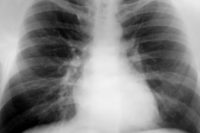On oil and gas worksites, diesel engines power machines ranging from drilling rigs to high-powered hydraulic fracturing pumps, to generators and lighting equipment. The diesel exhaust from these engines, however, is a toxic mix of chemicals that includes small particles of carbon, or soot, which can be accidentally inhaled.
For workers, exposure to diesel soot, also called diesel particulate matter or DPM, in diesel exhaust can cause health problems ranging from eye and skin irritation to breathing difficulty and, potentially, cancer. Yet, little information is available about the health risks of DPM exposure during oil and gas extraction and other related tasks. At this time, work-related exposure limits for DPM are not established, although the state of California Department of Health Services advises limiting occupational exposure (measured as elemental carbon) to less than 20 micrograms per cubic meter of air over an 8-hour workday.
Using the California limit for comparison, NIOSH researchers tested DPM levels in 104 air samples on oil and gas worksites in Colorado, North Dakota, Texas, and New Mexico from 2008 to 2012. Of these samples, 49 were from personal breathing zones of workers and 55 were from the general work area where workers spend part of their shifts. The results showed that the level of DPM varied widely. Measured values ranged from less than 1 to 52 micrograms per cubic meter of air over the workday. The average level measured in workers’ breathing zone samples was 10 micrograms per cubic meter over the workday. This value was lower than the California exposure limit, but 5 of the 49 personal breathing zone samples exceeded this limit.
To prevent health effects related to diesel exhaust, it is critical to minimize exposure. Recommendations include using alternative fuels, situating diesel-driven pumps away from worksites, properly configuring worksites, and using advanced technologies to control emissions. Other important components of a worker safety and health program are hazard communication and training about the danger of diesel exhaust exposure. Additional research is necessary to understand the risks among specific workers and how to control these risks to minimize exposure to diesel exhaust.









